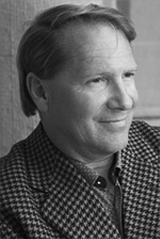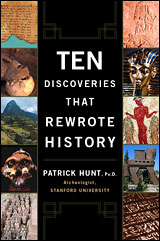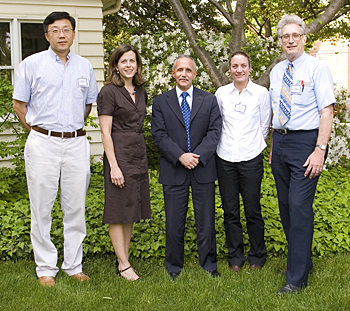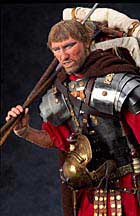
Susanna Elm
Professor of History and Classics
D.Phil. Oxon., Literae Humaniores (Ancient History) St. Hilda's College, 1986
Philosophicum, summa cum laude, Free University Berlin (BA-equivalent in Philosophy and education), 1982
Interim examination, summa cum laude, University Berlin, 1980
Music certificate, qualified flute teacher, North Rhine Westphalian Academy of Music, 1978
Valedictorian, Gymnasium Leopoldinum I, Detmold, 1978
Selected Publications:
Books:
Virgins of God. The Making of Asceticism in Late Antiquity. Oxford Classical Monograph Series. Oxford: Clarendon Press, 1994; Paperback, 1996, re-ed. 1999, 2003).
The "Holy Man" Revisited (1971-1997): Charisma, Texts, and Communities in Late Antiquity. Ed. Susanna Elm and Naomi Janowitz. Special Issue Journal of Early Christian Studies 6: 3 (1998).
Orthodoxie, christianisme, histoire - Orthodoxy, Christianity, History. Ed. Susanna Elm, Éric Rebillard and Antonella Romano. Collection de l'École française de Rome 270. Rome: École française de Rome, 2000.
Medical Challenges for the New Millennium - An Interdisciplinary Task. Ed. Stefan N. Willich and Susanna Elm. New York/Amsterdam: Kluver, 2001.
Violence in Late Antiquity: Perceptions and Practices. Ed. H. Drake and co-ed. E. Albu, S. Elm, M. Maas, C. Rapp, M. Salzman. London: Ashgate, 2006.
Sons of Hellenism, Fathers of the Church: Gregory of Nazianzus, Emperor Julian, and the Christianization of the Late Roman Elites. In preparation.
Quo Vadis - Medical Healing. Past Concepts and New Approaches. Ed. Susanna Elm and Stefan Willich. New York: Springer, forthcoming.
Articles:
"An Alleged Book theft in Fourth Century Egypt: P. Lips. 43." Studia Patristica 18 (1989): 209-215.
"Perceptions of Jerusalem Pilgrimage as Reflected in Two Early Sources on Female Pilgrimage (3rd and 4th Century A.D.)." Studia Patristica 20 (1989): 219-223.
"The Sententiae ad Virginem by Evagrius Ponticus and the Problem of Early Monastic Rules." Augustinianum 30 (1990): 393-404.
"Evagrius Ponticus' Sententiae ad Virginem." Dumbarton Oaks Papers 45 (1991): 265-295.
"Vergini, vedove, diaconisse - alcuni osservazioni sullo sviluppo dei cosidetti "ordini femminile’ nel quarto secolo in Oriente." Codex Aquilarensis 5 (1991): 77-89.
"Formen des Zusammenlebens mät;nnlicher und weiblicher Asketen im östlichen Mittelmeerraum wät;hrend des vierten Jahrhunderts nach Christus," in Doppelklöster und andere Formen der Symbiose mät;nnlicher und weiblicher Religiosen im Mittelalter. Ed. Kaspar Elm and Michel Parisse. Berliner Historische Studien 18; Ordensstudien 8. Berlin: Duncker and Humblot, 1992, 13-24.
"Athanasius of Alexandria’s Letter to the Virgins - who was its intended audience?" in Ricerche Patristiche in onore di Dom Basil Studer OSB. Ed. V. Grossi and A. di Berardino. Augustianum 33. Rome: Institutum Patristicum Augustianum, 1993, 171-183.
"Priests ... shall not make any cuttings in their flesh (Lev. 21: 5)." Graven Images 2 (1995): 36-41.
"Schon auf Erden Engel:" Einige Berkungen zu den Anfät;ngen asketischer Gemeinschaften in Kleinasien." Historia 45 (1996): 483-500.
"The Polemical Use of Genealogies: Jerome's Classification of Pelagius and Evagrius Ponticus" Studia Patristica 33 (1996): 311-318.
"Pierced by Bronze Needles:" Anti-Montanist Charges of Ritual Stigmatization in their Fourth-Century Context." Journal of Early Christian Studies (Special Issue) 4: 4 (1996): 409-439.
"Isis' Loss: Gender, Dependence, and Ethnicity in Synesius' De Providentia or Egyptian Tale." in Journal of Ancient Christianity 1 (1997): 96-115.
"Der Asket als vir publicus. Die Bedeutung von Augustinus' Konzept des Christus iustus et iustificans für den spät;tantiken Asketen als Bischof," in: Recht, Macht, Gerechtigkeit. Ed. J. Mehlhausen. Veröffentlichungen der Wissenschaflichen Gesellschaft für Theologie. Gütersloh: Kaiser, 1999, 192-201.
"The Dog that Did Not Bark: Doctrine and Patriarchal Authority in the Conflict between Theophilus of Alexandria and John Chrysostom of Constantinople," in: Christian Origins I. Ed. L. Ayres and G. Jones. London: Routledge, 1998, 68-93.
"The Diagnostic Gaze: Gregory of Nazianzus' Theory of Orthodox Priesthood in his Oration 6 "De pace" and 2 "Apologia de Fuga sua," in:Orthodoxie, christianisme, histoire/ Orthodoxy, Christianity, History. Ed. Susanna Elm, Éric Rebillard and Antonella Romano. Rome: École française de Rome, 2000, 83-100.
"Inventing the Father of the Church: Gregory of Nazianzus' "Farewell to the Bishops" (Or. 42) in its Historical Context," in Vita Religiosa im Mittelalter. Ed. Franz Felten and Norbert Jaspert. Berlin: Dunker und Humblot, 1999, 3-20.
" 'Sklave Gottes' – Stigmata, Bischöfe und anti-hät;retische Propaganda im vierten Jahrhundert." Historische Anthropologie 8: 3 (1999): 345-363.
"A Programmatic Life: Gregory of Nazianzus’ Orations 42 and 43 and the Constantinopolitan Elites." Arethusa 33 (2000): 411-427.
"Orthodoxy and the True Philosophical Life: Julian and Gregory of Nazianzus." Studia Patristica 37 (2001): 69-85.
"Developments in Ancient Medicine - Models for Today's Challenges? Contemporary Medicine and the Christianisation of the Roman Elite – a Parallel," in Medical Challenges for the New Millenium - An Interdisciplinary Task. Ed. Stefan N. Willich and Susanna Elm. New York/Amsterdam: Kluver, 2001, 3-17.
"Historiographic Identities. Julian, Gregory of Nazianzus and the Forging of Orthodoxy," JAC/ZAC 7 (2003): 249-266.
"Inscriptions and Conversions. Gregory of Nazianzus on Baptism (or. 38-40)," in Conversion in Late Antiquity and the Early Middle Ages: Seeing and Believing. Ed. Kenneth Mills and Anthony Grafton. Rochester: University of Rochester Press, 2003, 1-35.
"Hellenism and Historiography: Gregory of Nazianzus and Julian in Dialogue," Journal of Early Medieval Europe 33: 3, Special issue honoring Elizabeth A. Clark, 2003, 493-515; Italian version, “Ellenismo e Storiografia. Giuliano emperore e Gregorio Nazianzeno," in Societá e cultura nella tarda antichitá, Ed. A. Marcone. Florence: Le Monier, 2004, 58-76.
"Marking the Self in Late Antiquity: Inscriptions, Baptism and the Conversion of Mimes," in: Stigmata. Ed. Bettine Menken and Barbara Vinken. Paderborn: Wilhelm Fink Verlag, 2004, 47-68.
"A response," Reconsiderations. Augustine and his Time. Ed. W. Fitzgerald. Villanova University Press, 2005, 16-21.
" 'Oh Paradoxical Fusion:' Gregory of Nazianzus on Baptism and Cosmology (Or. 38-40)," in: Heavenly Realms and Earthly Realities in Late Antique Religions. Ed. R. A. Boustan and A. Y. Reed. Cambridge: Cambridge University Press, 2004, 617-657.
"Gregory's Women: Creating a Philosopher’s Family," in Gregory of Nazianzus: Images and Reflections. Ed. Jostein Břrtnes and Tomas Hät;gg. Oslo: Oslo University Press, 2006, 171-191.
"Captive Crowds: Pilgrims and Martyrs," in CROWDS. Ed. Jeffrey T. Schnapp and M. Tiews, Palo Alto: Stanford University Press, 2006, 133-148.
"Roman Pain and the Rise of Christianity," in Quo Vadis Medical Healing: Past Concepts and New Approaches. Ed. Susanna Elm and Stefan Willich. New York: Springer, forthcoming.
"Perpetua the Martyr – Perpetua the Saint. The Cultural Context of an Early Christian Phenomenon," In: The Imagined Worlds of Martyrdom. Ed. Christopher Ocker and Susanna Elm. Submitted to Cambridge Press.
"Family Men. Masculinity and Philosophy in Late Antiquity," Festschrift Peter Brown. Ed. Philip Rousseau, forthcoming.
Recent Invited Lectures:
Schloss Elmau: Interdisciplinary Conference on Medicine; Healing, Quo vadis?: "Roman Pain and the Rise of Christianity” (5/4-7/03).
Udine: Universitá di Udine, Societá e Cultura in eta tardoantica: “Ellenismo e Storiografia.” (5/29-30/03).
Oslo: Norwegian Institute of Advanced Studies, Oslo: Colloquium Gregory of Nazianzus:
“Gregory's Women” (6/16/03).
Tokyo: Keio University, Dept. of History: “Wandering Bishops” (10/6/03).
Villanova: Institute for Augustinian Studies: Saint Augustine-Reconsiderations: Comment (12/6/03).
Bielefeld: Dept. of History: “Becoming Roman in Rom: Malaria und Migration” (2/7/04).
St. Louis: Dept. of History, Washington University: “Both Mother and Father: Gregory of Nazianzus’ Philosophical Family and the Question of Masculinity in Late Antiquity”
(4/6/04).
Miami: University of Miami, Dept. of History: “Gregory’s Women” (4/15/04).
Stanford: Humanities Center: “A New Masculinity in Late Antiquity?” (5/17/04).
Princeton: IAS, “Prophecy and Divine Ascent” – The Late Antique Roots of the Koran
Colloquium (6/2-4/04).
Kiel: Dept. of History: ““Both Mother and Father: Gregory of Nazianzus’ Philosophical Family and the Question of Masculinity in Late Antiquity” (06/25/04).
Washington DC: Dept. of Classics, The Andrew Mellon Lecture: “Romanitas: Slavery,
Demography and Roman Identity.” (10/29/04).
Princeton: Dept. of History, Shelby Collum Davis Center Thirty Year Anniversary: “Why I do the History I do” (11/18/04).
Vancouver: Dept. of English, Center for Medieval Studies, Conference Performing the Past: “History and Histrionics” (10/28-10/29/06).
Berlin: American Academy, Ellen Maria Gorrison Lecture: “Pagan Challenge - Christian
Response - Transforming the Late Antique Elites” (02/06/07).
Frankfurt a. M.: Max-Planck Institut für Rechtsgeschichte: “Divine Decree and Imperial Enactment” (05/03/07).
Contact
Office: 2310 Dwinelle Hall
Hours: Tuesday 2-4pm
Phone: (510) 642-2238
Email: elm@berkeley.edu

 Professor Feeney teaches in the area of Latin poetry in particular, and has published two books on the interaction between Roman literature and religion (The Gods in Epic; Literature and Religion at Rome), with another on Roman representations of time (Caesar's Calendar). He is currently working on a book tentatively entitled Roman Horizons, on the way the Romans modernised themselves in the third and second centuries BCE.
Professor Feeney teaches in the area of Latin poetry in particular, and has published two books on the interaction between Roman literature and religion (The Gods in Epic; Literature and Religion at Rome), with another on Roman representations of time (Caesar's Calendar). He is currently working on a book tentatively entitled Roman Horizons, on the way the Romans modernised themselves in the third and second centuries BCE. B.A. Toronto ’70, D.Phil. Oxford ’76.
B.A. Toronto ’70, D.Phil. Oxford ’76. Professor Baraz specializes in Latin literature and Roman culture. She is interested in how literary texts shape, and are in turn shaped by, social and cultural forces. She is currently completing a book manuscript entitled Cicero's Philosophical Politics that locates the body of philosophical work Cicero produced in the 40s BCE under Caesar's dictatorship in its historical and cultural context. She is also working on a new project that explores the meaning of pride and related concepts in Roman society (a paper on this subject is forthcoming in "Kakos": Badness in Classical Antiquity, Ralph Rosen and Ineke Sluiter, edd., Brill 2008).
Professor Baraz specializes in Latin literature and Roman culture. She is interested in how literary texts shape, and are in turn shaped by, social and cultural forces. She is currently completing a book manuscript entitled Cicero's Philosophical Politics that locates the body of philosophical work Cicero produced in the 40s BCE under Caesar's dictatorship in its historical and cultural context. She is also working on a new project that explores the meaning of pride and related concepts in Roman society (a paper on this subject is forthcoming in "Kakos": Badness in Classical Antiquity, Ralph Rosen and Ineke Sluiter, edd., Brill 2008).


















